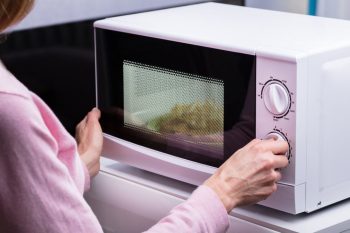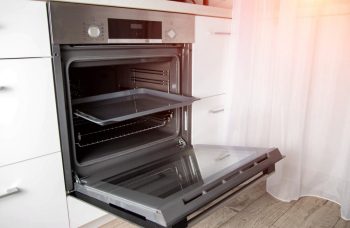
The history of ovens is a fascinating journey through time, reflecting the evolution of human society, culinary practices, and technological advancements. In this comprehensive guide, we delve into the details of when and how ovens became an integral part of households worldwide.
Ovens have been used in various forms since ancient times, but they became popular household items during the Industrial Revolution around the 18th century with the advent of cast-iron ovens. The popularity of ovens further increased in the late 19th and early 20th centuries with the introduction of gas and electric ovens. Technological advancements and societal trends have continued to influence the widespread use of ovens in households worldwide.
The Ancient Beginnings
The earliest known ovens date back to 29,000 BC in Central Europe, used as roasting and boiling pits in yurts. However, the first recorded oven in history was built in 1490 in Alsace, France, made using brick and tile. These ovens were primarily used for baking bread, a culinary staple in many ancient societies like the Egyptians, Romans, Greeks, and Jews.
The Industrial Revolution and the Rise of Cast-Iron Ovens
The Industrial Revolution in the 18th century marked a significant turning point in oven history. Cast-iron ovens began to be produced on a large scale around 1728. These ovens provided improved heat control and were more compact, making them an essential tool for households and industries alike.
The Advent of Gas and Electric Ovens
The first gas oven was patented by British inventor James Sharp in 1826. However, it wasn’t until the late 19th century that gas ovens started to gain popularity. This was partly due to the availability of gas in countries like Great Britain.
The first electric oven was patented by William Hadaway in 1896. The electric oven offered more precise temperature control and was safer to use than gas ovens. By the late 1920s and early 1930s, as the technology and distribution of electricity improved, electric ovens began to compete with gas ovens.
Societal Trends and the Widespread Use of Ovens
Cultural and societal trends played a significant role in the widespread use of ovens. As societies evolved and settled into communities, the need for more efficient and convenient cooking methods arose. The development of ovens can be traced back to 29,000 BC in Central Europe, where they were used as roasting and boiling pits inside yurts. Over time, various innovations and cultural influences contributed to the evolution of ovens.
In the 18th and 19th centuries, European immigrants brought their traditional stone stoves and oven designs to America, which were then adapted and modified by the local population. The Dutch oven, for example, became popular in Europe and America due to its versatility and adaptability to different cooking styles.
Modern Ovens and Technological Advancements
The 20th century brought about significant advancements in technology and manufacturing, making ovens more accessible and desirable. Modern ovens prioritize energy efficiency, reducing operating costs and making them more appealing to users. Innovations in oven design, such as ergonomic side access doors and access hatches, facilitate easy cleaning and maintenance, ensuring hygiene and food safety.
In recent years, the integration of Internet of Things (IoT) technology has enabled remote control and monitoring of ovens, providing users with greater convenience and control. In addition, hybrid and all-electric ovens minimize or eliminate CO2 and NOx emissions and decrease energy consumption, making them more environmentally friendly and cost-effective.
Conclusion
From ancient roasting pits to modern, high-tech appliances, ovens have come a long way. They have evolved alongside human society, reflecting our culinary needs and technological advancements. Today, ovens are an essential part of households worldwide, used for a variety of cooking methods, from baking and roasting to broiling and steaming. While we can’t predict what the future holds for oven technology, one thing is for sure: ovens will continue to be an integral part of our cooking experience.
Frequently Asked Questions
What materials were the first ovens made of?
The first ovens were made from materials easily available in nature such as clay, bricks, and tiles. The most primitive ovens were roasting and boiling pits dug into the ground.
Why did it take so long for gas ovens to become popular after they were invented?
The popularity of gas ovens was largely dependent on the availability of gas. It wasn’t until the late 19th century that gas became widely available in countries like Great Britain, which led to the rise in popularity of gas ovens.
What is a Dutch oven?
A Dutch oven is a thick-walled cooking pot with a tight-fitting lid. It is usually made of cast iron and is known for its ability to maintain an even cooking temperature, making it ideal for slow-cooking meals.
What are some benefits of modern electric ovens?
Modern electric ovens offer precise temperature control and are generally safer to use than gas ovens. They are also more energy-efficient, reducing operating costs. In addition, many modern electric ovens feature smart technology, allowing for remote control and monitoring.
How are modern ovens more environmentally friendly?
Modern ovens, especially hybrid and all-electric ovens, minimize or eliminate CO2 and NOx emissions, reducing their environmental impact. They are also designed to be more energy-efficient, which not only lowers operating costs but also decreases energy consumption, contributing to environmental sustainability.












